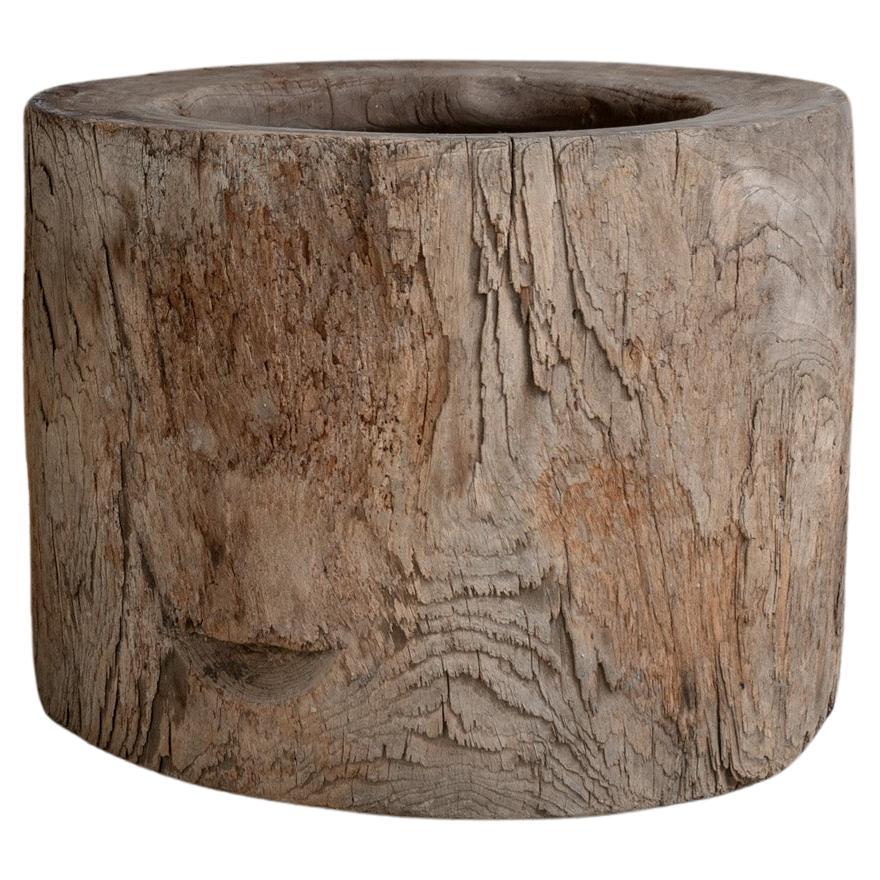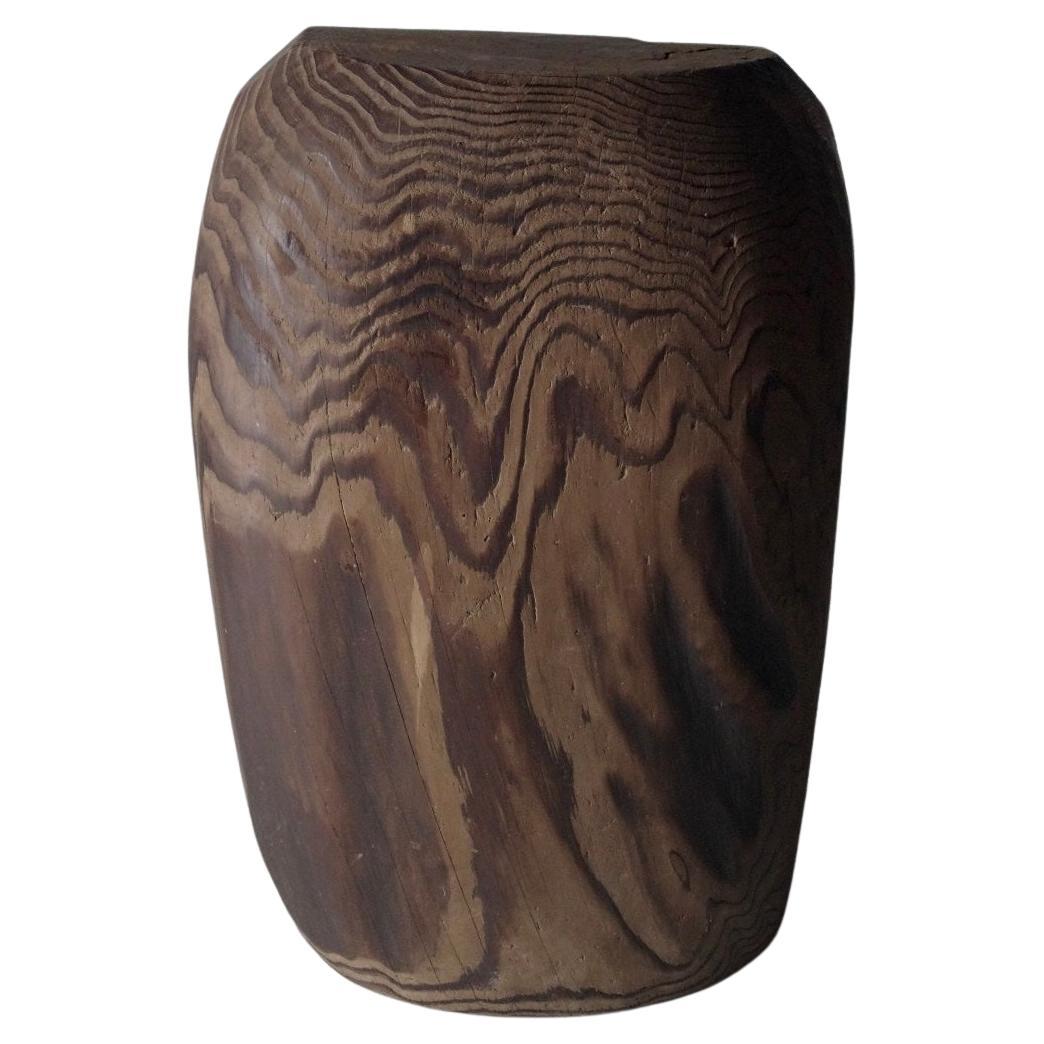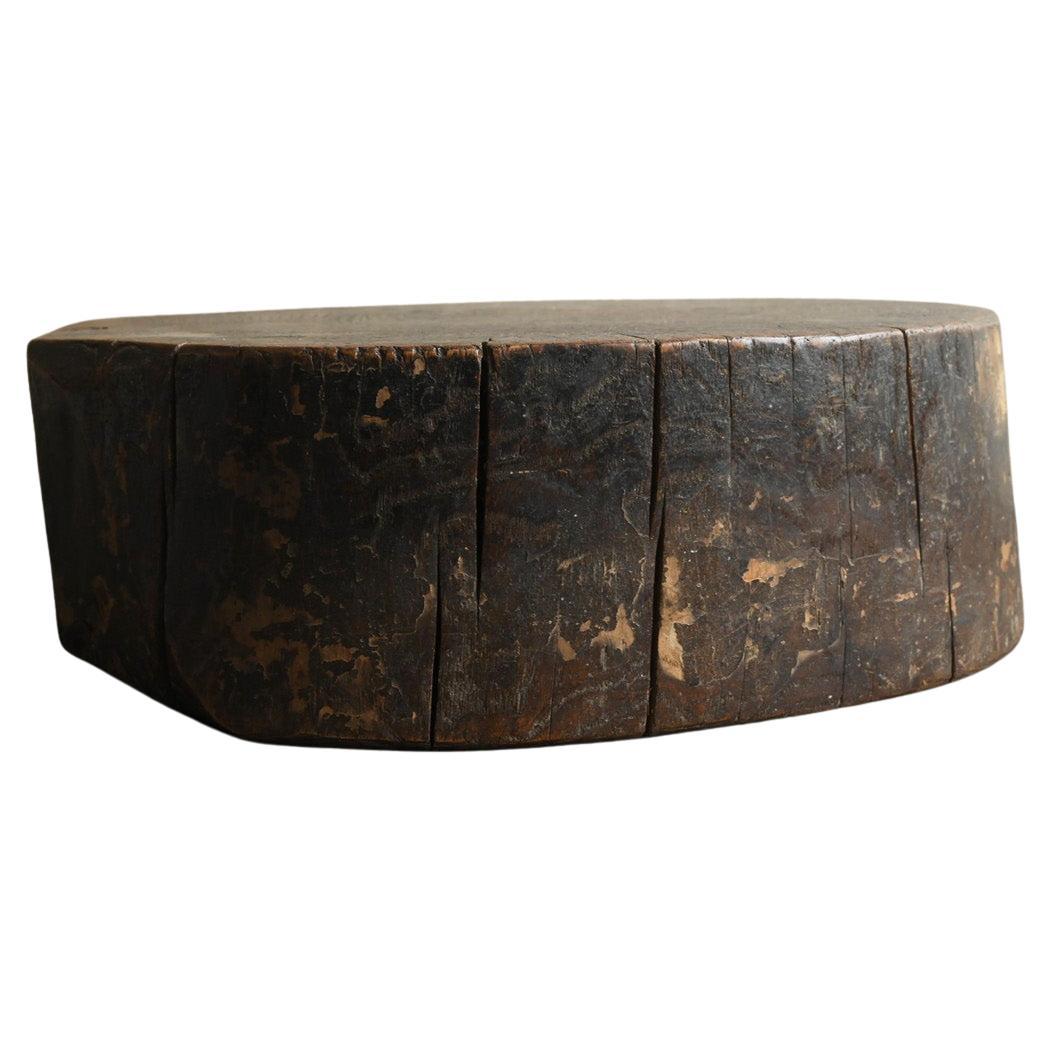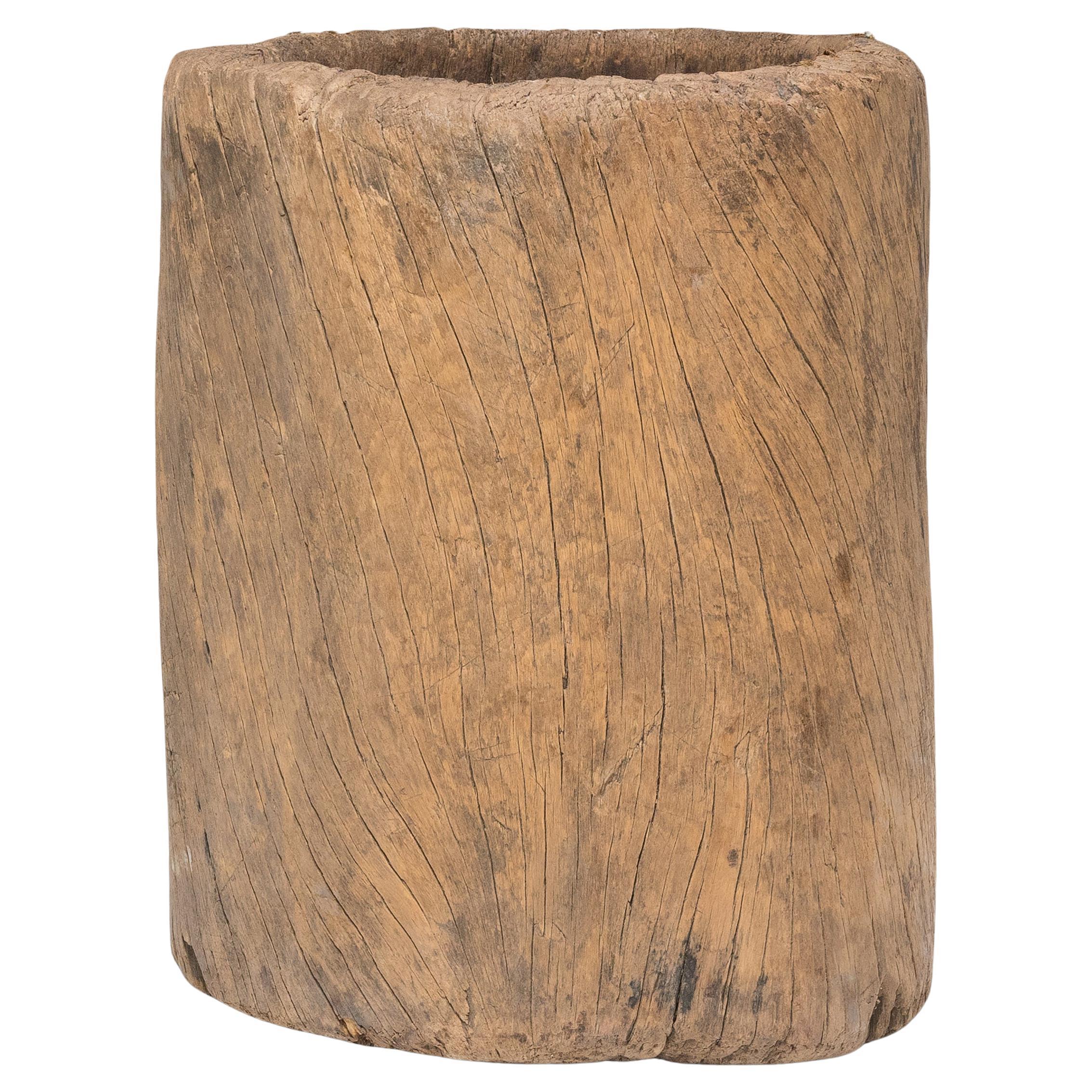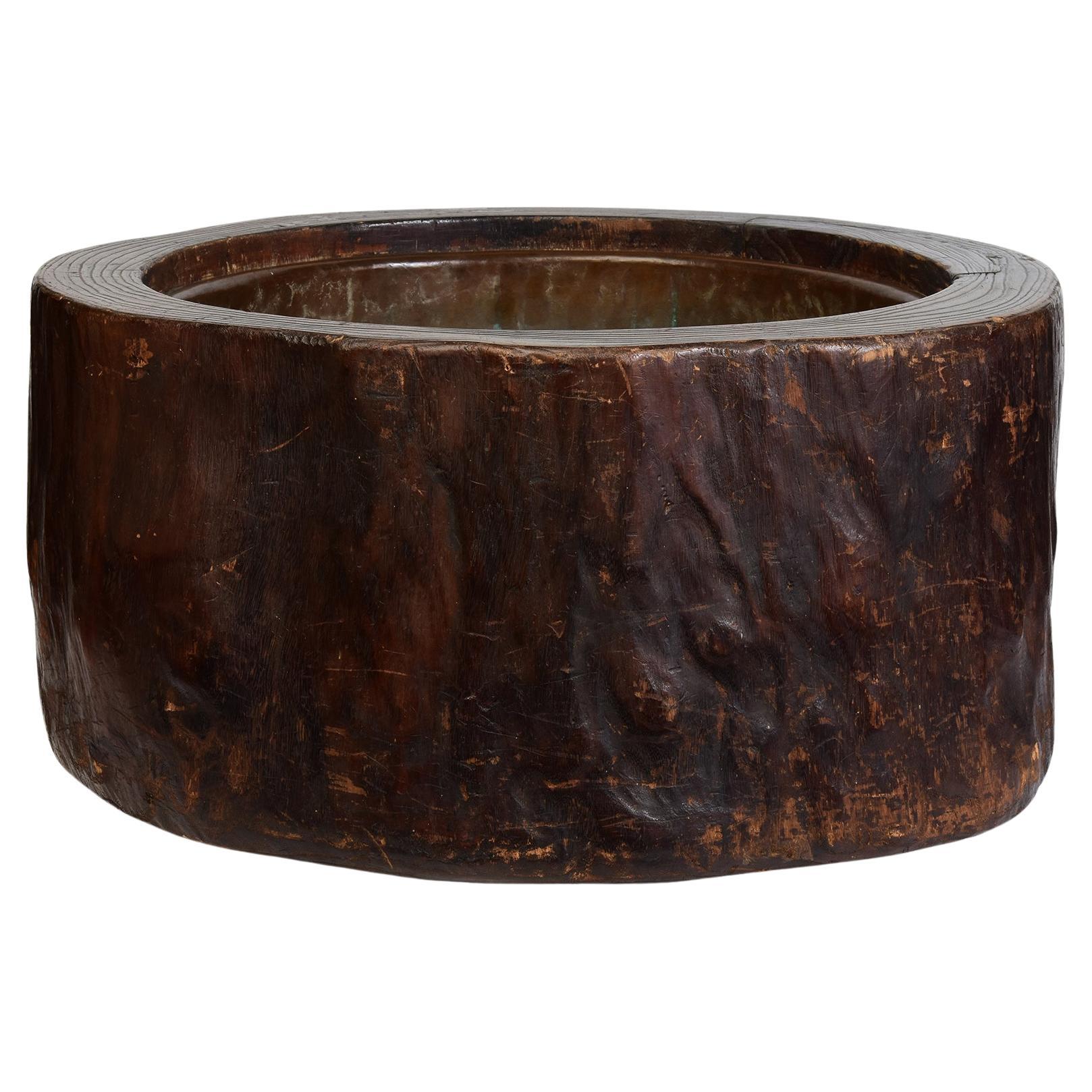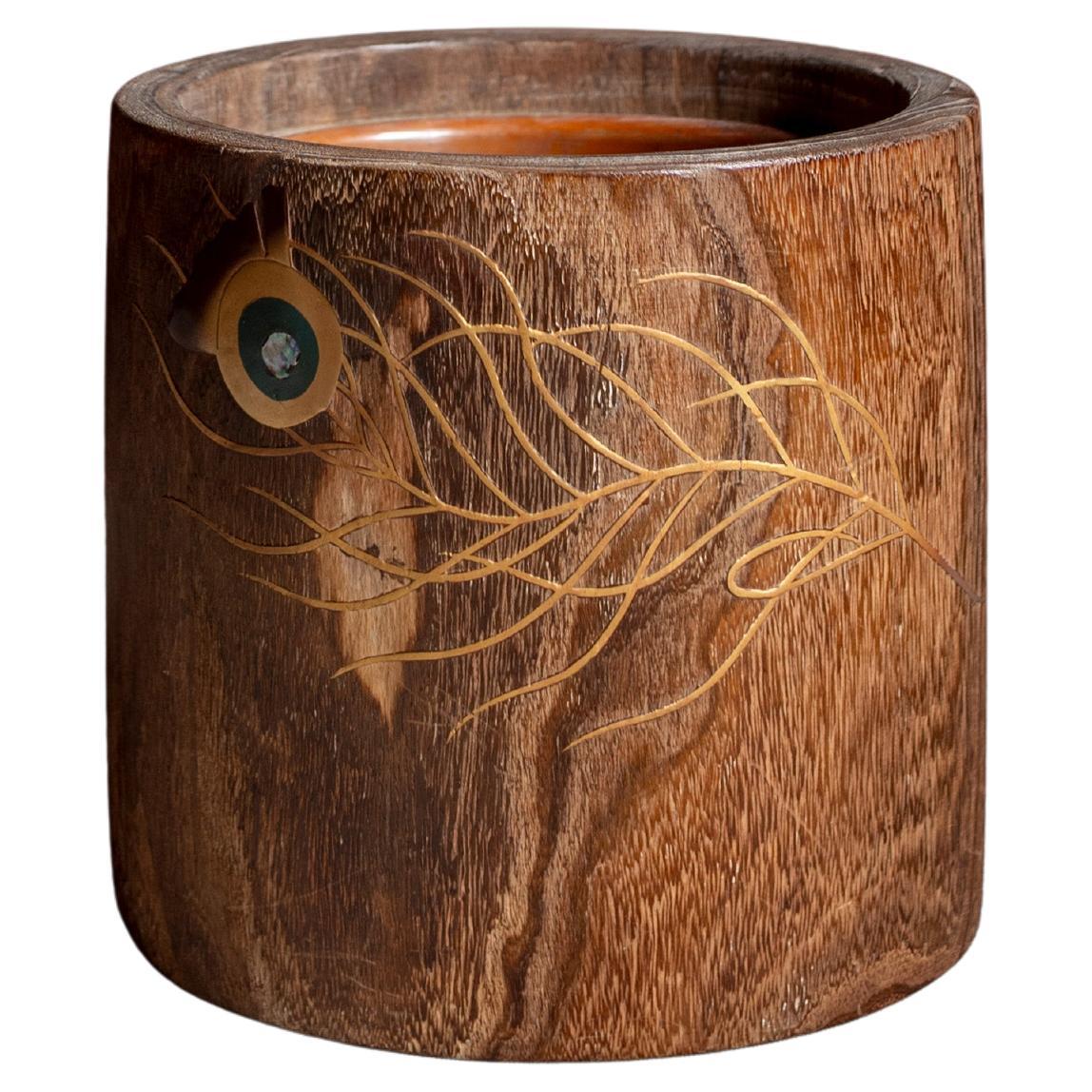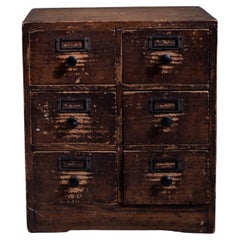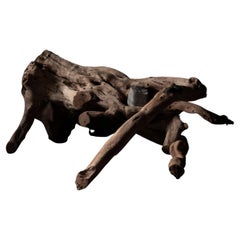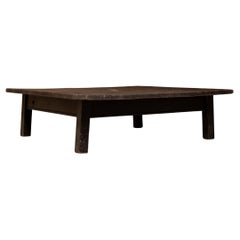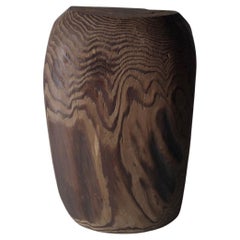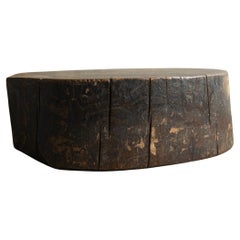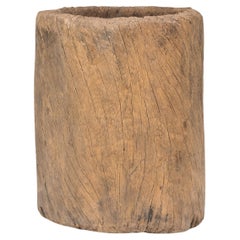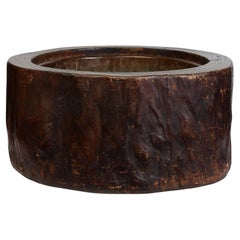Items Similar to "Usu", Hande-carved, Wabi-sabi, Early 20th Century, Japan
Want more images or videos?
Request additional images or videos from the seller
1 of 8
"Usu", Hande-carved, Wabi-sabi, Early 20th Century, Japan
$2,500
£1,896.94
€2,168.98
CA$3,491.82
A$3,882.43
CHF 2,027.19
MX$47,258.64
NOK 25,866.08
SEK 24,235.28
DKK 16,187.53
Shipping
Retrieving quote...The 1stDibs Promise:
Authenticity Guarantee,
Money-Back Guarantee,
24-Hour Cancellation
About the Item
"Usu" is one of the traditional tools with a rich history, representing an important aspect of Japanese culture, especially in culinary arts. Typically, it consists of a large wooden or stone bowl with a flat bottom, where ingredients are placed and then ground with a heavy pestle known as "kine." It is in this tool that rice dough for the famous Japanese dessert, mochi, is made.
Today, this unique tool can also serve as an interesting decorative piece, adding touches of Japanese tradition and warm charm to your interior. You can cover it with a glass plate or a stone top, transforming it into a coffee or artisan table and creating a captivating atmosphere for your space.
- Dimensions:Height: 16.93 in (43 cm)Diameter: 22.25 in (56.5 cm)
- Style:Folk Art (Of the Period)
- Materials and Techniques:
- Place of Origin:
- Period:
- Date of Manufacture:Early 20th Century
- Condition:Minor losses.
- Seller Location:Tokyo, JP
- Reference Number:1stDibs: LU2614342242022
About the Seller
5.0
Platinum Seller
Premium sellers with a 4.7+ rating and 24-hour response times
Established in 2008
1stDibs seller since 2017
131 sales on 1stDibs
Typical response time: 6 hours
- ShippingRetrieving quote...Shipping from: KAWAGUCHI-SHI, Japan
- Return Policy
Authenticity Guarantee
In the unlikely event there’s an issue with an item’s authenticity, contact us within 1 year for a full refund. DetailsMoney-Back Guarantee
If your item is not as described, is damaged in transit, or does not arrive, contact us within 7 days for a full refund. Details24-Hour Cancellation
You have a 24-hour grace period in which to reconsider your purchase, with no questions asked.Vetted Professional Sellers
Our world-class sellers must adhere to strict standards for service and quality, maintaining the integrity of our listings.Price-Match Guarantee
If you find that a seller listed the same item for a lower price elsewhere, we’ll match it.Trusted Global Delivery
Our best-in-class carrier network provides specialized shipping options worldwide, including custom delivery.More From This Seller
View All"Usu", Hande-carved, Wabi-sabi, Early 20th Century, Japan
Located in Tokyo, Tokyo
"Usu" is a traditional Japanese tool with a deep cultural significance, particularly in the culinary arts. This unique item typically features a large wooden or stone bowl with a fla...
Category
Early 20th Century Japanese Folk Art Antiquities
Materials
Wood
Japanese Tansu, Wabi-sabi, 1920s, Japan
Located in Tokyo, Tokyo
The unique antique tansu — an elegant piece of furniture with deep Japanese roots.
This small tansu features six compartments that are not only functional but also serve as a work o...
Category
Early 20th Century Japanese Arts and Crafts Antiquities
Materials
Wood
Wabi Sabi Natural Driftwood and Stone Sculpture, Japan
Located in Tokyo, Tokyo
Natural driftwood and stone sculpture from Japan. Very good vintage condition.
The beautiful form shaped by the nature. Wabi Sabi.
Category
20th Century Japanese Natural Specimens
Materials
Stone
Japanese Low Table, Wabi-sabi, 1920s, Japan
Located in Tokyo, Tokyo
The antique low table, that was crafted from old Japanese wood.
The top panel has been roughly shaved and showcases various marks and scratches that tell a story of its history.
It...
Category
Early 20th Century Japanese Sofa Tables
Materials
Wood
Japanese Drawer Chest, Wabi-sabi, Japan
Located in Tokyo, Tokyo
A beautifully crafted antique tansu, piece of functional furniture with deep Japanese roots. This larger tansu features six compartments, making it both a practical storage solution...
Category
Mid-20th Century Japanese Antiquities
Materials
Wood
Japanese Vintage Linen Noren, Textile, Wabi Sabi, 19th Century
Located in Tokyo, Tokyo
The unique and beautiful fabric piece, that's called noren - traditional Japanese fabric divider that was made during the Meiji era. This traditional Japanese curtains used to divide...
Category
Antique 19th Century Japanese Textiles
Materials
Linen
You May Also Like
Japanese Folk Tools Wooden Objet / Display Stand / Wabi-Sabi Primitive
Located in Iwate-gun Shizukuishi-cho, Iwate Prefecture
It is believed that this was used as an old Japanese folk tool.
Cedar is used.
The beautiful wood grain and rounded exterior can be decorated in the space as an object.
In additio...
Category
20th Century Japanese Primitive Antiquities
Materials
Wood, Cedar
Japanese antique wooden work board / 20th century / small display stand
Located in Sammu-shi, Chiba
This is an old Japanese wooden workbench made from zelkova wood (keyaki), known for its hardness and beautiful grain. The thick cross-sectional shape clearly reveals the concentric g...
Category
20th Century Japanese Taisho Antiquities
Materials
Wood
Provincial Chinese Trunk Mortar, c. 1900
Located in Chicago, IL
This large wooden mortar dates to the late 19th century and was originally used for crushing rice, grain, spices and other foodstuffs. Carved from a single tree trunk, the mortar has...
Category
Antique Late 19th Century Chinese Organic Modern More Asian Art, Objects...
Materials
Wood
Late 19th Century, Meiji, Antique Japanese Keyaki Wooden Pot 'Hibachi'
Located in Sampantawong, TH
Antique Japanese Keyaki wooden Hibachi vessel.
Hibachi is a traditional Japanese heating device.
Age: Japan, Meiji Period, Late 19th Century
Size: Length 63.5 C.M. / Width 62 C.M. /...
Category
Antique Late 19th Century Japanese Antiquities
Materials
Wood
$1,560 Sale Price
20% Off
Antique Japanese Wooden Hibachi, Japan, Wabi Sabi, 20th Century
Located in Edogawa-ku Tokyo, JP
A beautiful antique Japanese hibachi crafted from richly grained wood, featuring an elegant inlaid design of a peacock feather. Traditionally, hibachi were used as portable charcoal ...
Category
Early 20th Century Japanese Antiquities
Materials
Wood
Antique Mortar, Wabi Sabi Style, Scandinavia 1800s
Located in Hønefoss, 30
Wooden Wabi Sabi Mortar from Scandinavia, circa 1800s. In good vintage condition showing beautiful patina from age and use.
Category
Antique 19th Century Swedish Romantic Scientific Instruments
Materials
Wood
More Ways To Browse
Wabi Sabi Art
Japanese Stone Art
Antique Carved Japanese Furniture
Japanese Charm
Japanese Wood Plate
Antique Stone Bowl
Wabi Sabi Bowl
Wabi Sabi Stone
Japanese Wood Bowl
Asian Glass Top Coffee Table
Rice Carved
Large Antique Wooden Bowl
Dough Bowl
Antique Dough Bowl
Asian Wooden Bowl
Wood Dough Bowl
Dough Table
Large Dough Bowl
